RIO DE JANEIRO, BRAZIL – When you happen to hear that Espírito Santo is a surprising state in Brazil, believe it: it really is. In addition to beaches, mountains and an abundance of lush nature, the region still hides peculiar and very interesting places.
Would you believe that there is a rock that can change color 36 times a day? In Espírito Santo there is one. What about a village that was covered by sand in the 60s? There is one too. And the first Zen monastery in Latin America? It’s also found in Espírito Santo. And an island teeming with giant ferns? Yes, it’s in Espírito Santo.
We have sorted out a little list of these and many other amazing places in the state of Espírito Santo.
Pedra Azul State Park
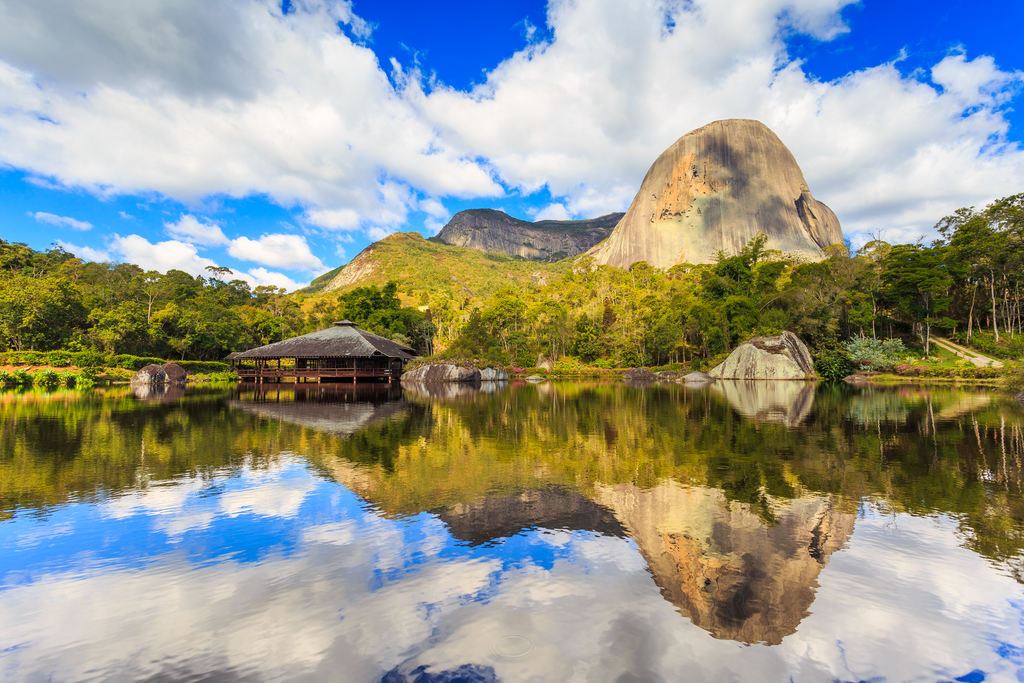
The Pedra Azul State Park is located in the municipality of Domingos Martins, in the mountainous region of Espírito Santo. Only 50 km from the capital city Vitória, the park covers a total of 1,240 hectares, part of which is open to visitors. Its main attraction is the famous Pedra Azul (Blue Rock), a rock formation 1822 meters high that acquires over 36 shades during the day due to the incidence of sunlight, one of the great tourist attractions of Espírito Santo. Next to it is the also famous Pedra do Lagarto (Lizard’s Stone) which, in fact, reminds us of the shape of a lizard climbing the rock.
The park’s trails are well marked and the total route takes approximately three hours to walk. Among the most famous trails are those that lead to nine natural pools, shaped by wind and rain, as well as the trail that runs to the Pedra Azul and to a lookout point.
For those in the area, it is worth taking the tour and visiting the Lagarto Route, a small road that includes several charming restaurants and inns, as well as wonderful views of the rock. At a certain period of the year, between July and August, cherry trees decorate the flower-filled landscape, turning the Pedra Azul into an even more incredible picture-perfect scenery.
Where is it? Click here.
Itaúnas
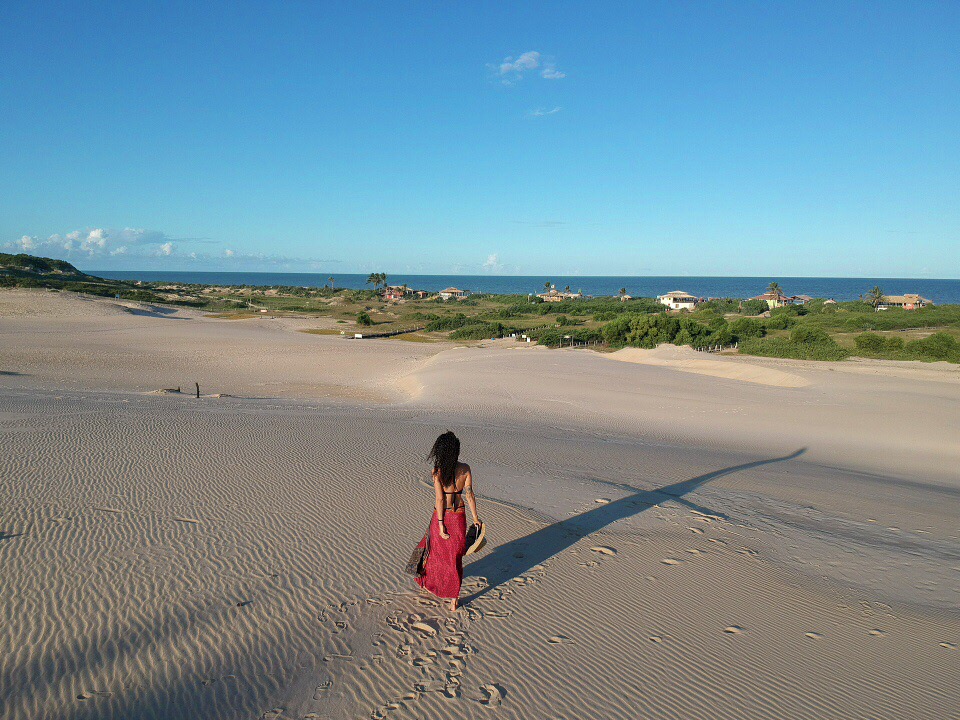
In Itaúnas, on the border of Espírito Santo and Bahia, lies a true paradise. Discovered by backpackers in the 80’s, a rustic village is surrounded by mangroves, streams, plenty of preserved nature and an unpretentious atmosphere, where the ‘forró’ (typical rhythm, and dance) goes on until dawn.
As if this were not enough, the beach with the same name features dunes that can reach up to 40 meters in height. Crossing the large sandy hills is required to access the strip of sand and the sea, but the end result is worthwhile. There are also ruins of an old fishing village that was buried by the sand in the 60’s and still retains a few vestiges of its prior existence. With plenty of quiet, tranquility, an incredible scenery and great rusticity, Itaúnas is undoubtedly a place that you will not expect to find in Espírito Santo.
Where is it? Click here.
Praia dos Padres (Padres Beach – Guarapari)
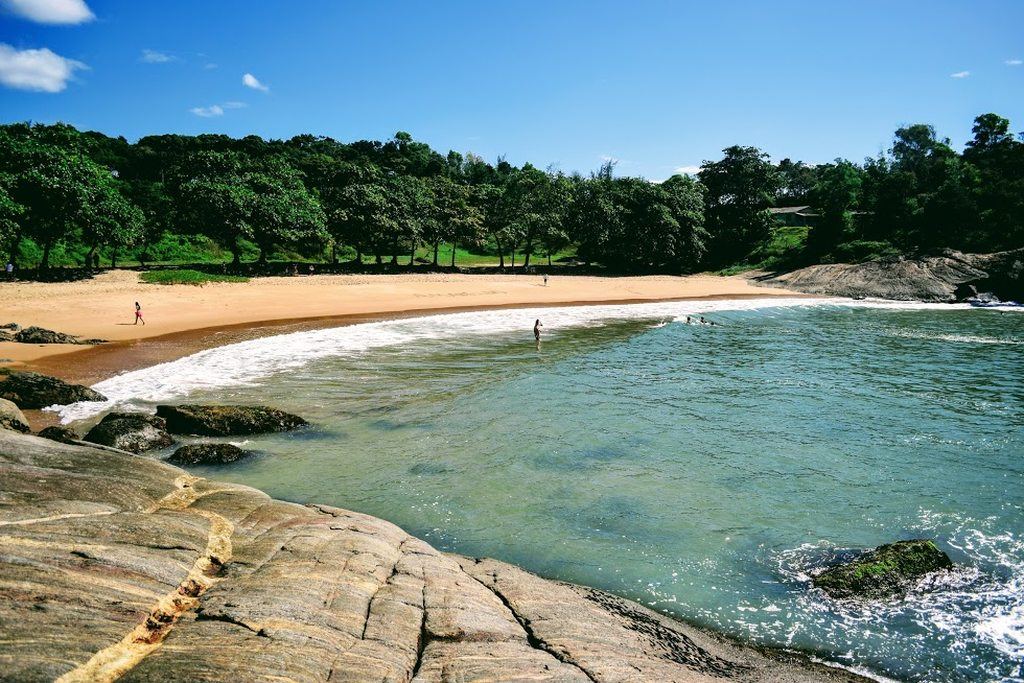
The city of Guarapari, a little over an hour’s drive from Vitória, is home to one of Espírito Santo’s most famous beaches: Padres beach. Peaceful and remote, access is made through a very quiet wooden platform to cross.
The sea, with few waves and crystal-clear waters, is perfect for diving and then resting under the shade created by the chestnut trees that are found along the shoreline. Many rocks decorate the beach’s surroundings, and visitors may take the best pictures of the site from atop them. As it is a virtually untouched spot by man, there is no bar or restaurant facilities, so bringing some food or drinks is advisable.
Where is it? Click here.
Ilha da Trindade (Trindade Island)
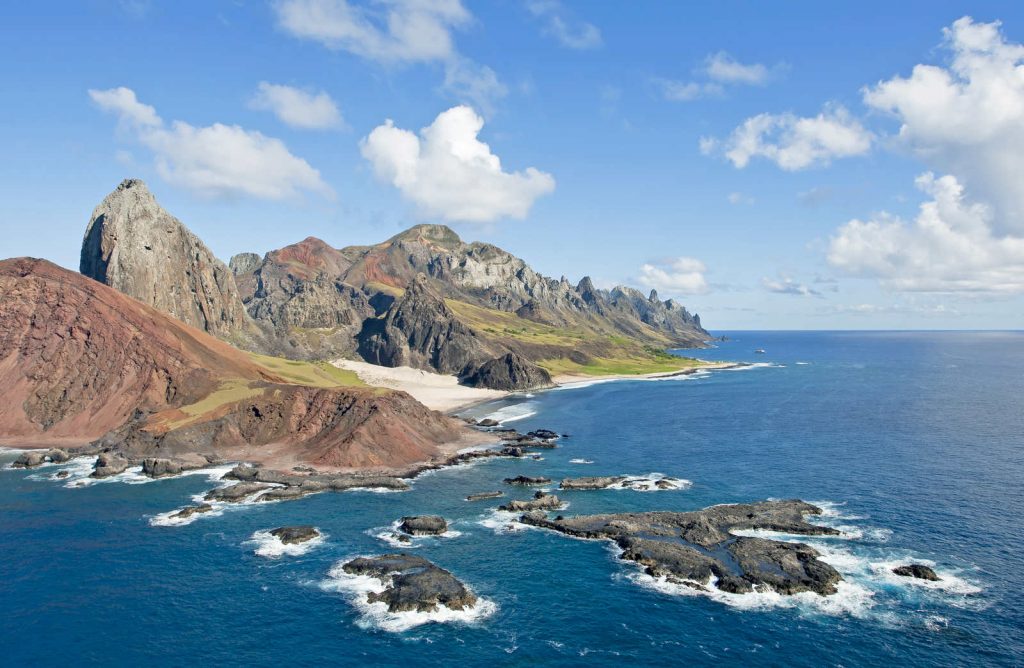
Imagine the island of ‘Lost’ in the midst of Espírito Santo. Located approximately 1,100 kilometers from the mainland, an area that officially belongs to the municipality of Vitória, is Trindade Island. The place is known to be the most remote island in Brazil and the largest marine reserve in the entire Atlantic, since it contains rich biodiversity.
The island still retains endemic species that only exist there, such as the yellow crab and giant fern woods over 5 meters tall. And there’s more: Africa is only 2400 kilometers from the island, which currently serves as a military base for the Brazilian Navy. As it is a conservation unit, tourists are not allowed to access the site, so this paradise is to be admired through pictures.
Where is it? Click here.
Mosteiro Zen Morro da Vargem (Vargem Hill Zen Monastery)
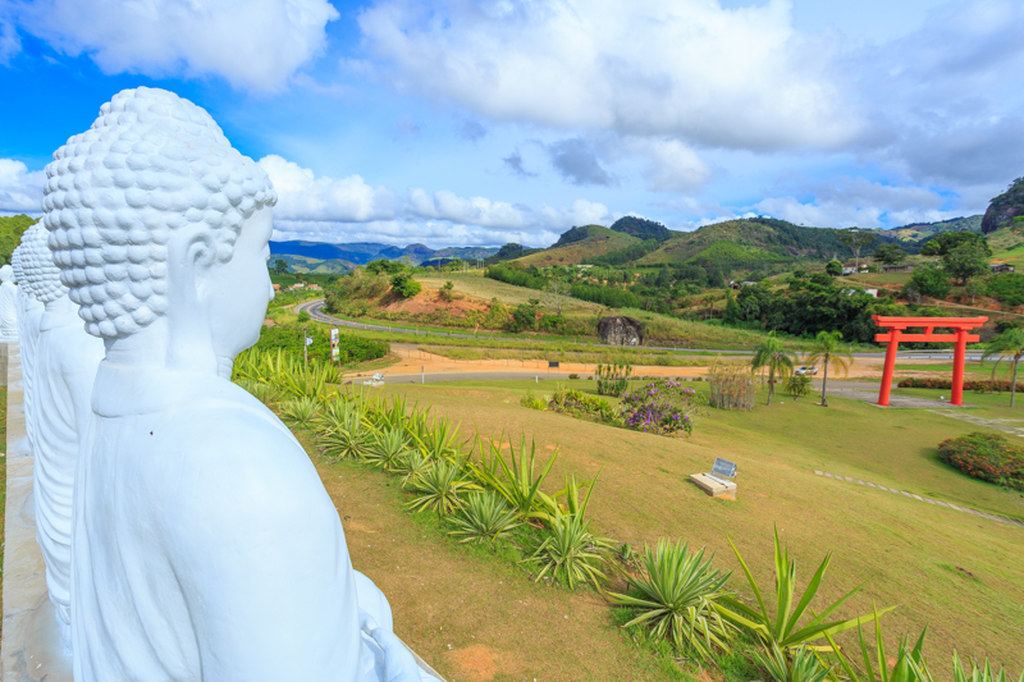
The Vargem Hill Zen Monastery, located in the municipality of Ibiraçu, 70 kilometers from Vitoria, is believed to be the first Zen Buddhist monastery in Latin America. Built in 1974, the building is approximately 350 meters high and boasts an incredible view of Ibiraçu’s natural beauty. With a solid work of environmental preservation, the monastery features a large area of preserved forest, which helps build an environment of silence and contemplation of nature.
Among the attractions to enjoy in the monastery is a tunnel with 108 Toriis, which represent the opening to a divine state. The largest Zen garden ever built in the world is also home to 15 large statues of Buddha.
The monastery only welcomes visitors on Sundays, but it is also possible to attend spiritual retreats that take place a few times a year, and enrollment can be done on its official website.
Where is it? Click here.
Cachoeira da Matilde (Matilda’s Waterfall)
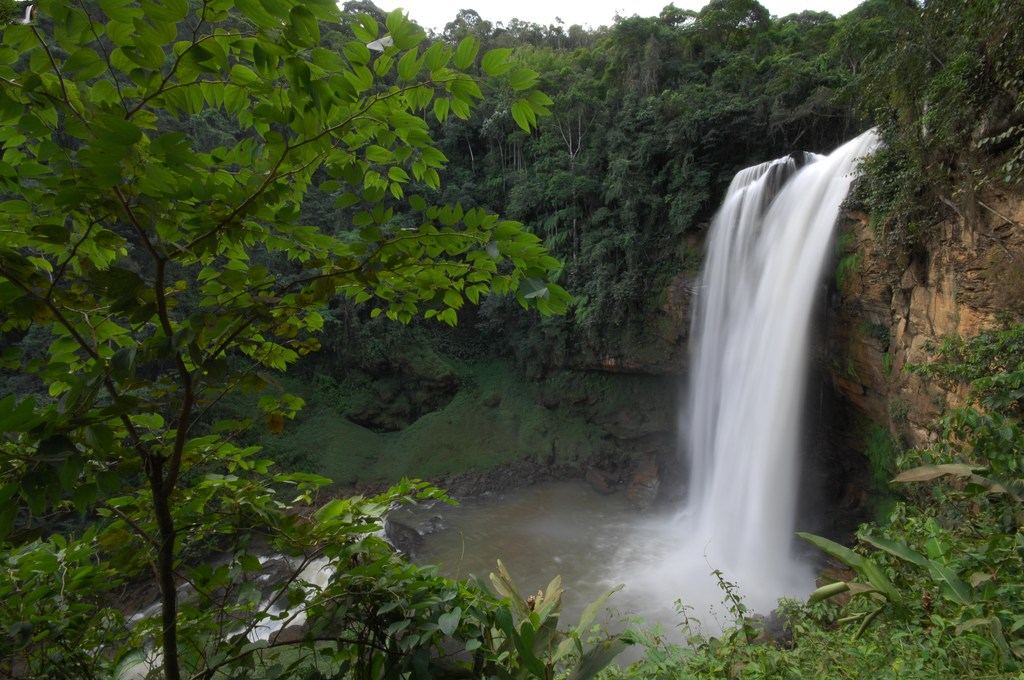
Only 90 km from Vitória, in the city of Alfredo Chaves, is Matilde district and the famous waterfall that bears the same name, also known as Engenheiro Reeve Waterfall. The way to the waterfall is entirely paved, with an access walkway on a stretch of preserved forest. Upon arrival, the majestic waterfall strikes viewers with its 70 meter height, standing among the largest waterfalls in the state.
Although it does not provide access for swimming, some brave visitors use its rocky walls for rappelling. Before reaching the waterfall, a small river forms a kind of fresh water beach known as “prainha” (“little beach”).
In addition to Matilda’s Waterfall and the ‘prainha’, on the same circuit, known as Caminho das Águas (Water Road), visiting the Matilde Railway Station is also an option, the enchanted tunnel, a lookout point that overlooks a valley, as well as other waterfalls.
Where is it? Click here.
Falésias de Marataízes (Marataízes Cliffs)
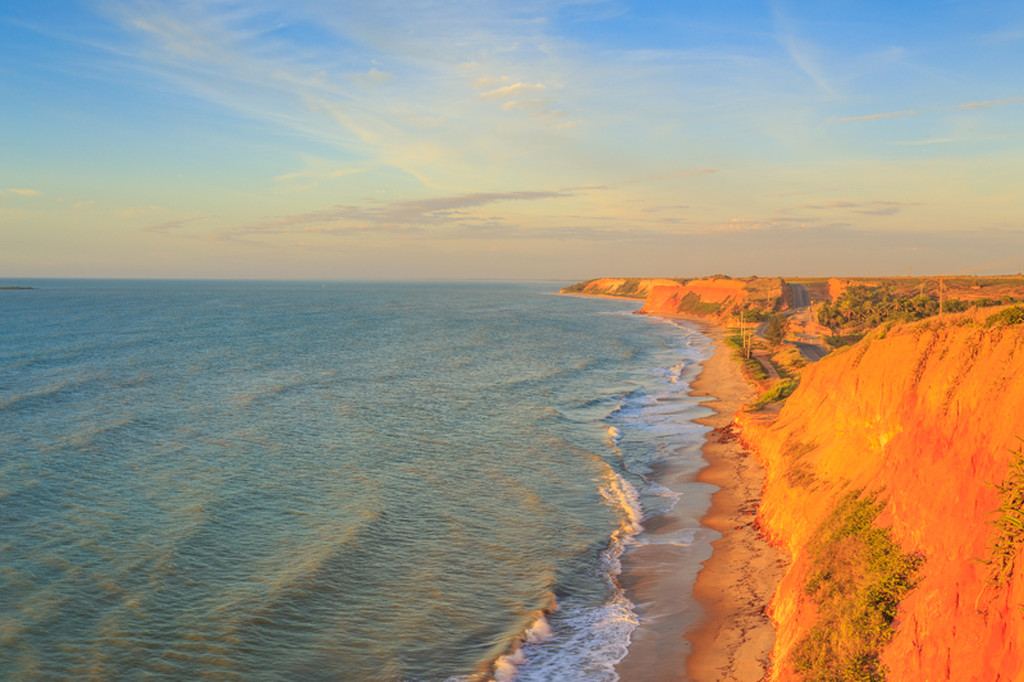
Praia das Falésias (Cliffs Beach), as its name suggests, features steep cliffs that can reach up to 40 meters in height. A little more than 2 hours from the town of Vila Velha, it is an accessible and heavenly destination.
There are not much shade, or kiosk and restaurant facilities, but once there, such details are irrelevant, as the view is rewarded by a rustic landscape, sandbanks and incredible views. As a kind of treat, next to the beach there is also a quiet lagoon with blue water, another great reason to take a refreshing swim.
Where is it? Click here.
Pedra Roxa (Purple Rock – Ibitirama)
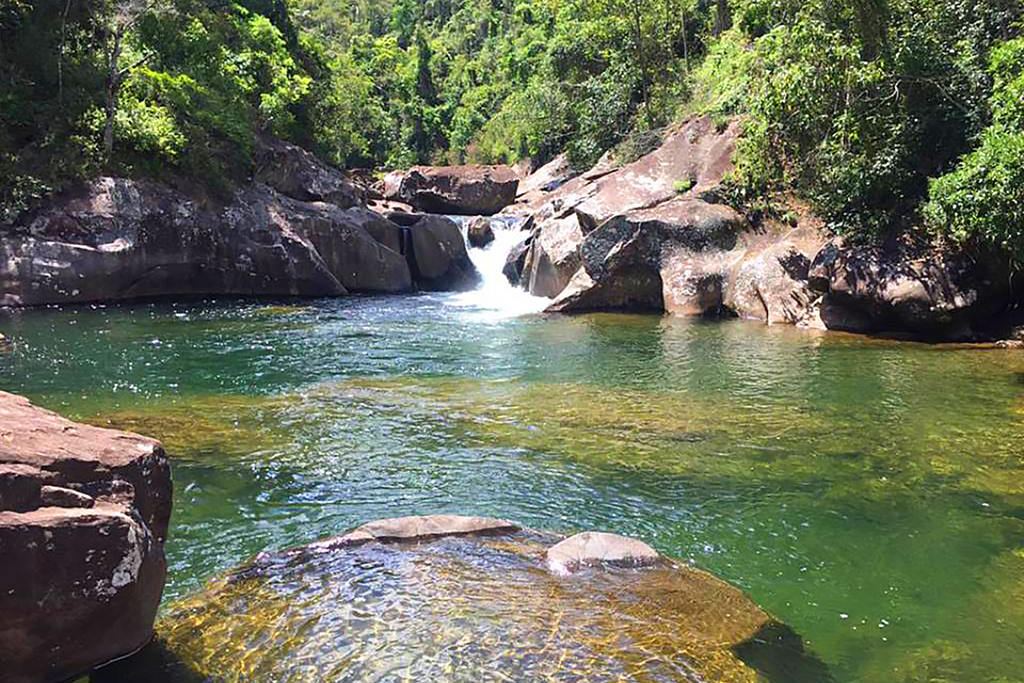
Pedra Roxa is a district that belongs to the municipality of Ibitirama, approximately 220 km from the capital Vitória. Known for being a strong coffee producer, the town displays great natural wonders, particularly the waterfalls and pools for swimming.
Along the river that cuts through the city one can find several rapids and waterfalls with crystalline waters, perfect for swimming. Most of them are located inside private property, so paying a small access fee is required.
One of the most famous waterfalls in the region is the Cachoeira da Pedra Roxa (Purple Rock Waterfall), located on a property known as Sítio da Onça. With calm and crystal-clear waters with a greenish hue, the site resembles a swimming pool and attracts many visitors in the summer. The Poço do Douglas (Douglas Pool), located inside the campsite and Recanto Cabaceira Inn, features a large bathing area surrounded by rocks that form a perfect setting.
Where is it? Click here.
Pico da Bandeira (Bandeira Peak)
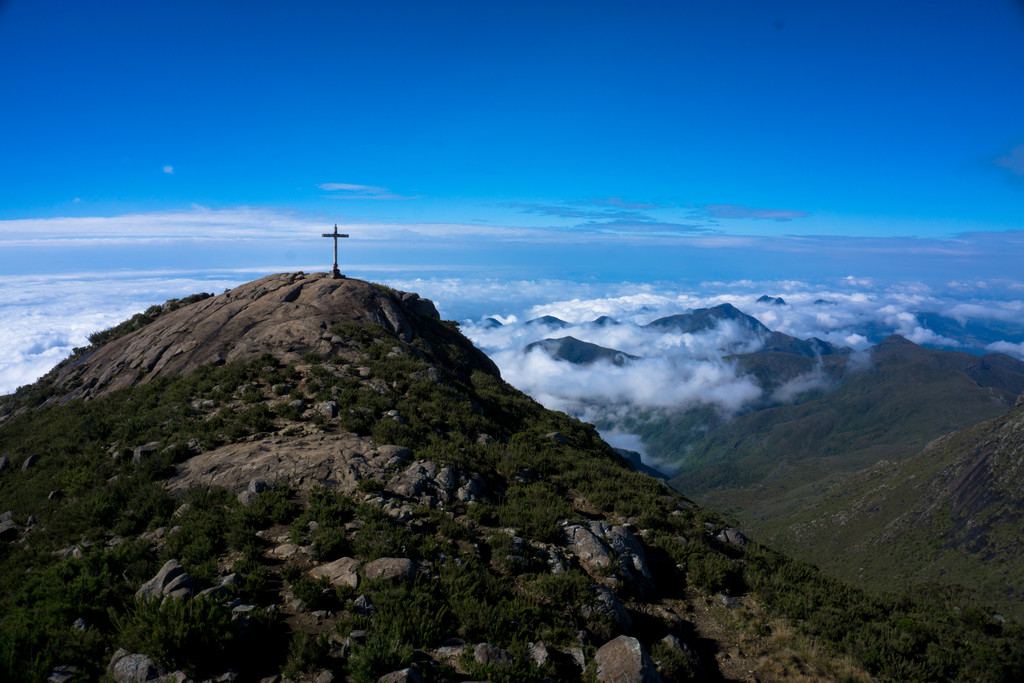
Located between Espírito Santo and Minas Gerais, Pico da Bandeira is the third highest mountain in Brazil, at 2,890 meters in height. The hike to the summit through steep trails departs from Alto Caparaó, in Minas Gerais, and takes seven hours ( 14 hours in total round trip).
The access through Dores do Rio Preto, in Espírito Santo, is shorter, with 9 km round trip in total. Despite the trails signposted all the way, both routes require much preparation – a certified guide is worth hiring.
Those facing the adventure will certainly be rewarded with several benefits: luxuriant nature, mountains and waterfalls. Many end up spending the night in camps located at the top of the mountain and, in the morning, the view at sunrise is impressive.
Where is it? Click here.

